A church in the fishing village of Thumba was converted into a rocket launch pad; parts were transported there in bullock carts and on cycles.
Published Nov 25, 2023 | 7:00 AM ⚊ Updated Nov 25, 2023 | 5:30 PM
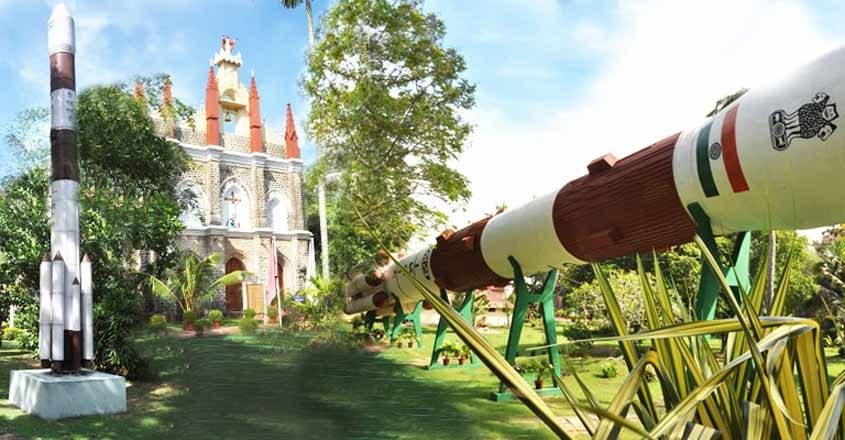
The Mary Magdalene church which became a part of the ISRO facilities in Thumba. (Supplied)
On Saturday, 25 November, Union Minister of State for Science and Technology Jitendra Singh will visit the former fishworkers’ village of Thumba on the outskirts of Kerala’s capital, Thiruvananthapuram, to witness the launch of a commemorative RH 200 sounding rocket, marking the 60th anniversary of India’s much-lauded space programme.
On 21 November 1963, an American-made Nike-Apache sounding rocket lifted off from this coastal village, marking a significant step forward in the country’s long-held desire to pursue space-related expeditions.
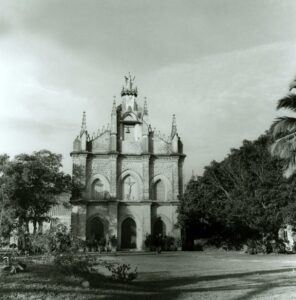
The church before being handed over to ISRO. (Supplied)
The commemorative rocket will be launched at 10:25 am on Saturday and students interested in pursuing a career in space science will have the opportunity to meet with ISRO scientists at Thumba soon after the launch.
Selfie stations and launch vehicle installations have been set up for the general public in Kanakakunnu, Manaveeyam Veedhi, and the State Central Library Complex in Thiruvananthapuram.
Celebrations would also take place at ISRO facilities in Bengaluru and Sriharikota.
While India is going all out to commemorate the occasion, only a small percentage of the populace is aware that the country launched its first rocket from a Latin Catholic church in Thumba, which was used to meet the spiritual requirements of the local fishing community, which is mostly illiterate and poor.
The early 1960s were a time when major world powers, including the United States and the Soviet Union, were preparing for space exploration and India did not want to fall behind.
Following the high-profile launch of the Russian Sputnik, Dr Vikram Sarabhai, the father figure of Indian space science, successfully persuaded the Union government of the importance of a space project for a growing country like India.
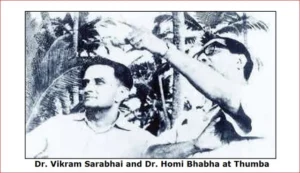
Vikram Sarabhai and Dr Homi Bhabha in Thumba. (Supplied)
During their search for suitable locations, Sarabhai and his colleagues arrived at Thumba on the Arabian Sea coast and determined that it was suitable for launching the country’s first rocket.
Sarabhai chose the local St Mary Magdalene Church as the best setting for the project.
Sarabhai informed his colleagues that the church was located on the Earth’s magnetic equator, where a magnetic needle moves from north to south, and he referred to it as a fantastic scientific possibility for the rocket launch.
However, the potential response of the church and its believer community caused a widespread concern among the scientists.
Sarabhai and his team went to Dr Peter Bernard Pereira, the then-Latin Catholic bishop of Trivandrum (as it was then called), hoping for his intervention. Pereira did not provide a firm response during the conversation, but he did invite the scientists to a Sunday service at the church.
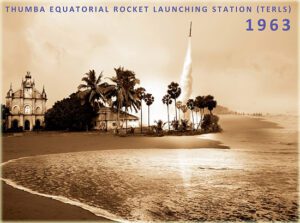
The first rocket was launched from Thumba. (Supplied)
Many of the scientists involved in the mission were puzzled, wondering what the church service had to do with space research.
Former Indian President APJ Abdul Kalam, who was on the team, later revealed that the bishop used his address in between the holy mass to tell the parishioners about his conversation with the scientists.
The bishop told the congregation that the country requires space science and its advancement.
He also stated that technological advancements can only improve people’s living conditions and release them from poverty. And he contended that there was nothing wrong with entrusting God’s home to a scientific endeavour for the greater good.
After the bishop finished his speech, there was silence.
But after that brief period of silence, Kalam recalled, the congregation let out a resounding “Amen”, which set off the history of Thumba, the top rocket launch facility in the nation.
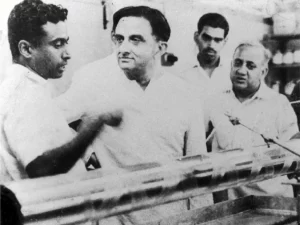
Kalam with srabhai in Thumba. Photo: Supplied
In 2022, when mainstream political parties organised bids to portray fish workers in Thiruvananthapuram, in general, and Latin Catholics, in particular, as “anti-nationals”, attempting to cripple the establishment of the controversial Adani-sponsored international sea port at Vizhinjam, the community countered the campaign by declaring themselves the world’s only religious community that gave up their church, houses, and belongings for nation-building and scientific pursuit.
A majority of the accompanying structures of the ISRO’s Thumba facility have sprung up on lands voluntarily donated by the local fishing population, which primarily consists of Latin Catholic churchgoers.
For the fish workers affiliated with the Latin Catholic community, the bishop and priests are God’s deputies, and they must follow their orders.
It’s a different story now at Thumba, where fish workers and ISRO facilities are contending against larger coastal erosion, induced by the impending Vizhinjam port in areas north of the development site.
The fish workers’ protest against the contentious project was ruthlessly suppressed, and deceptive attacks against them continue to circulate.
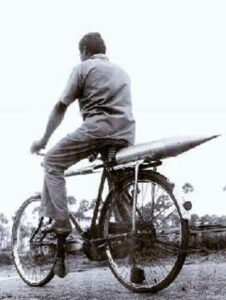
A rocket part was transported to Thumba using a bicycle in the 1960s. (Supplied)
As time passed, the church in Thumba was converted into a rocket launch station, with rockets placed almost exactly where the church’s altar formerly stood.
According to Kalam’s recollections, the church’s prayer chamber served as the first laboratory, while the priest’s room served as the sketching studio. A cow shed attached to the chapel was converted into a laboratory for all of the scientists on the programme.
Another critical component was the reassembling of the Nike-Apache rocket purchased from NASA. The parts for this rocket were so small that they had to be brought by bicycles and bullock carts to the remote site with no motorable roads.
Following Sarabhai’s death, the Thumba Equatorial Rocket Launch Station was renamed the Vikram Sarabhai Space Centre.
According to the ISRO archive, the first rocket weighed 715 kg and carried a 30 kg payload. And it flew to an altitude of 207 km.
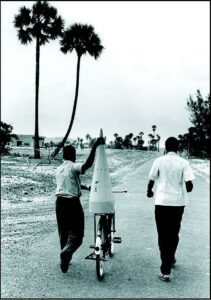
Thumba and a portion of rocket. (Supplied)
The Small Satellite Launch Vehicle (SSLV), India’s newest rocket, now weighs 120 tonnes, measures 34 metres in length, and can place 500-kg satellites into a 500-km orbit.
In the decades thereafter, Indian rocketry has blazed out, celebrating successes and learning from failures, pioneering a variety of rockets aka launch vehicles: SLV-3s, ASLVs, PSLVs, and GSLVs and their variants.
With these tried-and-true workhorses, no orbit — polar (height 700 km), geosynchronous transfer orbit (GTO), or low earth orbit (LEO, altitude 250 to 500 km) — is out of reach for India and ISRO.
The programmes launched in Thumba 60 years ago provided India with sustained, self-reliant access to space, even deep space, and can place in orbit a diverse range of locally-built satellites for remote sensing and earth observation, weather forecasting, communication, cartography, navigation, education (EDUSAT), surveillance, astronomy, and ocean monitoring.
ISRO’s remote sensing satellites are now regarded as among the best in the world, comparable to the French SPOT or the American Landsat.
The rocket from 1963 reached a speed of 3,800 km per hour. After the launch, Sarabhai sent a telegram home, stating, “Gee whiz, wonderful rocket shot.” That day, his ambition took flight.
When contacted by South First, Thiruvananthapuram Latin Archdiocese’s current Vicar General, Fr Eugene H Pereira, stated that the church and her people have always prioritised the country’s growth and are still proud of handing over their church and other possessions for the advancement of space science.
“We, the church and the fishermen community in the coastal areas here, are very happy and proud about the Indian Space Research Organisation’s achievements,” he said.
The church now hopes the government will rename the VSSC’s space museum in Thumba after Bishop Pereira.
“We want to name the space museum after Peter Bernard Pereira, the kind bishop who gave the country’s ambitious space mission wings by opening the church to scientists,” Eugene explained.
On Saturday, directors from several ISRO centres will celebrate the milestone with roughly 300 former employees.
There will also be exhibitions featuring ISRO’s previous operations, current achievements, and future objectives.
